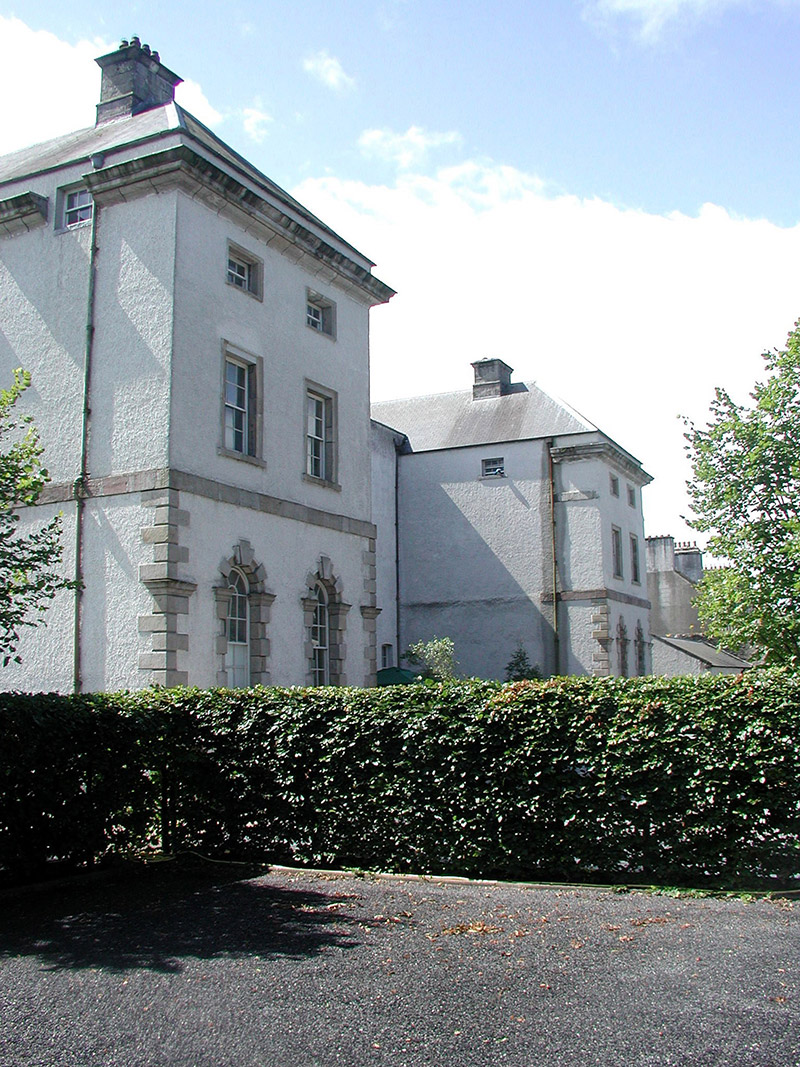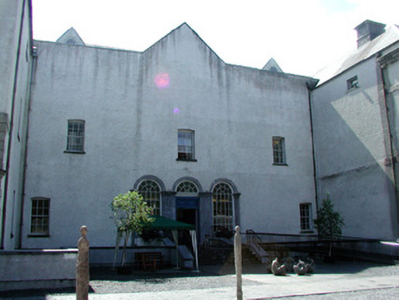Survey Data
Reg No
31804023
Rating
National
Categories of Special Interest
Archaeological, Architectural, Artistic, Historical, Social, Technical
Previous Name
Boyle Infantry Barracks
Original Use
House
In Use As
Museum/gallery
Date
1710 - 1730
Coordinates
180277, 302659
Date Recorded
25/07/2003
Date Updated
--/--/--
Description
Detached seven-bay three-storey over basement town house, built in 1720. Later used as a barracks and now used as a museum/gallery. Comprising central three-bay pedimented section flanked by two-bay projecting wings. Hipped slate roof with projections to sides with cut stone chimneystacks and cast-iron rainwater goods. Roof of central structure hidden by pedimented parapet with dormer windows. Roughcast render to walls with cut stone plinth, quoins, string courses and cornice. Ground floor window openings to projecting wings with Gibbsian limestone surround, Palladian windows with cut stone surround to first and second floor side elevations. Round-headed dormer windows to roof. All other façade windows are segmental-headed. Rear are square-headed with cut stone keystones. All window openings contain timber sash windows. Main entrance with central round-headed opening flanked by round-headed timber sash windows with decorative fanlights and cut stone pilasters. Timber panelled door with decorative fanlight and tooled limestone surround, accessed by steps and entrance platform flanked by wall and railings. Seven-bay three-storey extension to south-west with pitched slated roof with piecrust cornice and red brick chimneystacks. Single-storey roughcast-rendered outbuildings to front. Site bounded by rubble stone wall with carved stone gate piers and cast-iron gates.
Appraisal
This substantial house with its impressive skyline is one of the most important structures in Connacht. The well-proportioned façade with its Palladian detailing and finely-executed stonework is attributed to the architect William Halfpenny, who built the house for Sir Henry King, who died in 1739. The house possibly incorporates the walls of a 17th century structure into its architectural fabric. Though built in the Palladian style, this fine house retains a 17th century fortified character, which must have served it well when it was used as a military barracks during the nineteenth and early-twentieth centuries.











